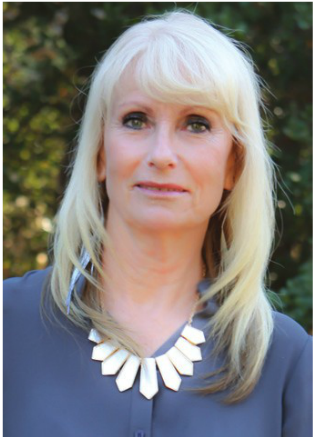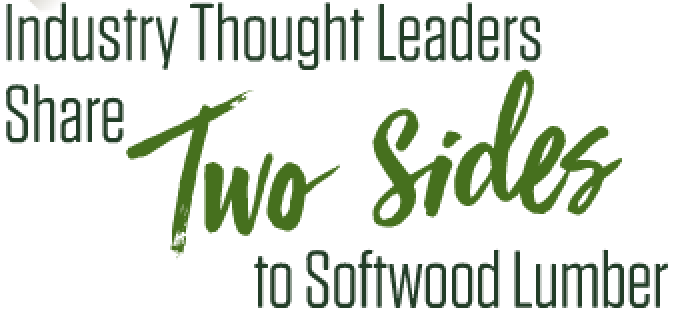The U.S. and Canada have long disputed over the issue of Canada softwood lumber being imported into the United States. While there are nuances to the issue, the main cause of the disagreement is that much of Canadian softwood forest is publicly, owned, compared to most privately owned forest land in the United States. Consequently, the provincial governments of Canada have greater control over stumpage fees, where U.S. lumber producers are subject to supply and demand market forces to set the pricing. With different forces driving price, the two countries continue to disagree over the existence of competitive advantages in the marketplace for softwood lumber.
Background
The modern framework of the dispute can be traced back to 1982, when the first countervailing duty (CVD) petition was filed by U.S. softwood producers, claiming that Canadian softwood lumber was unfairly subsidized. Nothing consequential came from this petition because of technicalities, but a second petition was filed in 1986, where the International Trade Commission (ITC) and U.S. Department of Commerce (DOC) determined that Canadian Lumber was subsidized by a rate of 15%. This determination lead to a memorandum of understanding (MOU) between the two countries until 1991, where Canada agreed to impose an original export tax of 15% on softwood lumber. Canada withdrew from the MOU in 1991, after which came several years of dispute that included required cash deposits and a CVD that totaled 21-26% on Canadian lumber. In 1996, the first Softwood Lumber Agreement (SLA) was established between the two countries to normalize trade. This SLA set a tariff-rate quota (14.7 billion board feet) on much of Canadian lumber, and shipments that exceeded the quota were taxed by the Canadian Government. If prices exceeded a “moderate level,” Canadian lumber could enter the U.S. tax-free. The U.S. reciprocated by not imposing a CVD or other restricting action.
The SLA expired in 2001 amid allegations that Canadian lumber companies were making slight modifications to the lumber so that it would classify under exemptions to quota. Upon expiration, the DOC and ITC reviewed petitions by the U.S. lumber industry against Canadian lumber entering the U.S. where the original determination was made that it would be subject to a CVD and anti-dumping duty (AD) totaling 27.2%. Canada made several appeals in the subsequent years, which resulted in reductions in payments.
The second SLA came into effect in 2006, where the U.S. agreed to terminate both CVDs and Ads. Canada agreed to collect taxes and made quota restrictions on lumber exports. Fees were assessed from 2.5% to 15% based on the region of production and prevailing retail price. Both U.S. and Canadian entities were scrutinized for proper enforcement over the following years, but the agreement held until its expiration in October 2015.
A one year extension was put in place while two countries attempted to reach a new deal, but one was not reached. As of October 2016, softwood lumber had been entering the U.S. freely without a duty or tax. Soon after, the U.S. Lumber Coalition filed another CVD/AD petition with the threat of retroactive duties limiting the amount of lumber crossing the border from Canada.
April 2017 Duties Announced
On April 24, 2017, the Trump Administration took retaliatory action against Canada over the softwood lumber issue. Commerce Secretary Wilber Ross announced a preliminary countervailing duty (CVD) rate of 19.88% will be levied against Canadian softwood lumber exports to the United States. Individual rates will be assessed to the five companies that were investigated. They are: West Fraser, 24.12%; Canfor, 20.26%; Tolko, 19.5%; Resolute, 12.82%; and J.D. Irving, 3.02%. The weighted average of those five companies’ rates determine the “all other” Canadian companies, which means those duties will be retroactive 90 days from when the CVD determination is published in the Federal Register Notice. Mr. Ross said the tariff would be applied retroactively and imposed on Canadian exports to the U.S. of about $5 billion a year. Commerce Secretary Ross said the dispute centers on Canadian provinces that have been allegedly allowing loggers to cut trees down at improperly subsidized costs and sell them at lower prices.
The Future of U.S. & Canada Softwood Lumber Trade
In talking with various leaders in this industry, we have heard different stories about what to expect next. There’s a feeling among some players that nothing can be done about the tariffs, which will inevitably rise. Others believe that it can be fought, reversed, or negotiated.
There is more room for negotiation potentially coming up this year, and with the tepid response from Congress to Trump’s recent outline of priorities on this treaty, almost any outcome is still on the table.
The U.S. softwood producers have shown strength in their win this round, while forces on the other side are quickly mobilizing. They realize that, in a battle like this, if you don’t show up to fight, you could easily become a casualty. The players in favor of the increased tariff include virtually all of the U.S. lumber producers and their trade groups, lawmakers from logging states, local community leaders from those areas where U.S. logging jobs are based, plus the entire economic supply chain related to U.S. logging. They’re happy with the early action taken by President Trump.
On the other side you’ll find (unsurprisingly) all of Canada (logging to them is like movie-making or the software coming out of silicon valley). But also, there are plenty of U.S. interests that are opposed to the tariff: homebuilders, lawmakers who believe in free-trade (which includes most Republicans in the Congressional majority), some retailers that sell lumber. Even the Heritage Foundation has opposed this, pointing to harm that will occur to other sectors of the economy and how Canada could sell their lumber to Asia while the U.S. ends up with higher prices in the long run. Then there are some Canadian lumber companies with a large presence operating the U.S> that could benefit either way.
The U.S. Department of Commerce will play the primary role in tariff determinations, which are levied at specific companies or industries at their discretion (subject to U.S. law and treaties, of course). Secretary Wilber Ross has taken a conciliatory tone toward Canada on the tariff changes. The U.S. Commerce Department is expected to make a final determination to the anti-dumping case by June 23, 2017. There has been no progress to date on the Softwood Lumber Agreement or expected timeline for completion. On May 18, 2017, the United States officially indicated its desire to enter into discussions on renegotiating NAFTA, triggering a 90-day consultation window before formal talks begin. It is highly unlikely a new Softwood Lumber Agreement would occur prior to the NAFTA negotiations.
 “We have not yet felt the impact, other than lumber prices skyrocketing as everyone speculates. As pellet kits are included for the first time, we are on a “wit and see” mode to see what changes occur once all the dust has settled. Countervailing but pallet kits? This is a whole new world.”
“We have not yet felt the impact, other than lumber prices skyrocketing as everyone speculates. As pellet kits are included for the first time, we are on a “wit and see” mode to see what changes occur once all the dust has settled. Countervailing but pallet kits? This is a whole new world.”
– Kathleen Dietrich
“Disruption for the sake of disruption? No. We are in full support of the concept of the 2017 softwood lumber agreement with Canada. The U.S. Dept. of commerce has stated that exporters of softwood lumber from Canada currently receive and have received subsidies between 3% and 25% which gives them an unfair advantage against U.S.-based companies. Furthermore, the vast majority of standing timber in Canada is owned by provincial governments, which are free to dump their lumber at virtually no cost in order to stimulate their forest industry. Naturally, resistance is heard from people who are profiting from this arrangement. I recently read that a mattress frame company said the wood they need has small knots and fine grain, a characteristic of softwood species grown in colder climates like Canada, and opposes the tariff. As far as I know, there are multitudes of other woods that can be used in lieu of “cold-grown” wood or perhaps something as simple as reengineering is in order. Either way, it’s not the end of anything, just a recalibration.
Will certain costs increase? It’s not only likely, it’s expected and encouraged. We support the leveling of the playing field to allow American companies to complete and succeed.”
– Anonymous Pallet Manufacturer
 “The announcement on May 8th on Countervailing Duties (CVD) of 19.88% with a 90 day retroactive period against certain wood packaging products manufactured from softwood lumber (SPF) has affected a number of Canadian exporters adversely. In the wood packaging industry, the area most affected is the annual export trade of around 300,000 mbf of unassembled pallets (HTSUS 4415.20.8000) and notched stringers (HTSUS 4415.20.8000). Also affected are smaller volumes of softwood lumber pallet cut stock. Many of the manufacturers affected had anticipated the duties but early this year. Most have lain off staff, but some have closed operations altogether. The impact that will be felt by the U.S. pallet manufactures is considerable, they are faced with replacing long established supplies of high quality SPF raw material with substantially higher priced domestic material.
“The announcement on May 8th on Countervailing Duties (CVD) of 19.88% with a 90 day retroactive period against certain wood packaging products manufactured from softwood lumber (SPF) has affected a number of Canadian exporters adversely. In the wood packaging industry, the area most affected is the annual export trade of around 300,000 mbf of unassembled pallets (HTSUS 4415.20.8000) and notched stringers (HTSUS 4415.20.8000). Also affected are smaller volumes of softwood lumber pallet cut stock. Many of the manufacturers affected had anticipated the duties but early this year. Most have lain off staff, but some have closed operations altogether. The impact that will be felt by the U.S. pallet manufactures is considerable, they are faced with replacing long established supplies of high quality SPF raw material with substantially higher priced domestic material.
From an overall industry perspective, unassembled pallets and pallet cut stock exports represent 2% of overall Canadian wood packaging production but the recent CVD decision has created a large amount of confusion and uncertainty around other exports. It’s unclear whether assembled pallets were targeted in the Scope of investigations into Countervailing Duties and Antidumping (assembled pallets trade using the same HTSUS code as unassembled pallets as historically they were both considered finished products and exempt from duty.)
Exporters are also experiencing confusion at the border and transportation delays are expected. Exports of non-targeted species such as aspen pre-cut material has seen prices rise and demand strengthened in the last few months.
This trade dispute was supposed to be about softwood lumber exports of dimensional lumber but a wide variety of finished products made of softwood have been targeted as well, and the CVD announcement has forced many secondary producers who cannot pass on the increased costs to look for alternative markets.”
– Brian Isard, Canadian Wood Pallet & Container Association

